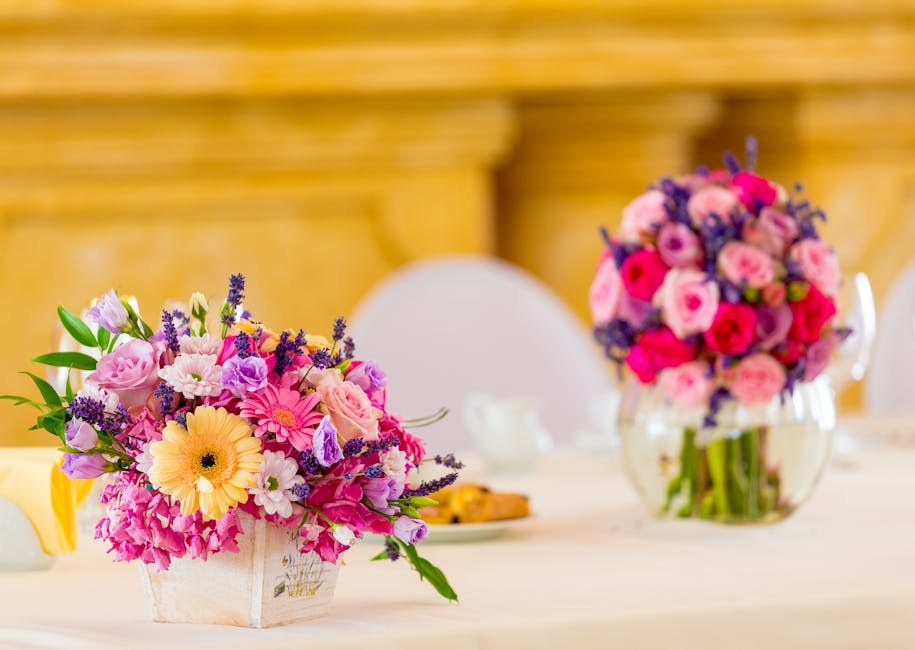In a world where messages fly across screens and vanish into feeds, a handwritten love letter feels almost magical – a tangible keepsake that carries your voice, your pacing, your pauses, your breath. If you’ve been wondering how to shape your feelings into words that stay, you’re in the right place. This guide will help you turn a simple page into a lasting memory, so your love letter becomes the note they tuck into a wallet, a book, or a bedside drawer for years to come.
Why a handwritten message still matters
Conversation is wonderful, but it’s fleeting. A love letter slows time so your feelings can unfurl without interruption. When your partner reads quietly – eyes following each line you crafted – your affection becomes unhurried and precise. A love letter also creates a ritual: unfolding the page, feeling the fibers of the paper, noticing the ink and the indentations of your pen. That sensory experience anchors emotion more firmly than a notification that disappears with a swipe.
Most importantly, a love letter invites intention. You get to gather your thoughts, choose your rhythm, and build a narrative that reveals the heart behind the words. It’s not performance; it’s presence.

First, set the scene for yourself
You don’t need candlelight and a string quartet to compose a love letter – but a little atmosphere helps. Choose a place that makes you feel tender and calm: a balcony at dusk, a favorite chair near a window, or a quiet corner of a park. Put on soft music that nudges your mood rather than stealing your focus. Allow a memory or two to float to the surface, and let those images guide your pen. The more clearly you feel, the more clearly you write.
Start with an address that feels personal
The first few words matter. They signal tone, intimacy, and warmth. Instead of a generic opening, greet your person with a phrase that belongs to the two of you – perhaps a cherished nickname or a line that echoes your private world. Try something like My dearest love, My favorite person, or To the one who steadies my heart. They’ll recognize themselves in your greeting before they even reach the first sentence of your love letter. Consider adding the date; years from now, that small detail becomes a time stamp on your devotion.
Ease into your first lines
Writers freeze when they aim for perfection in the opening sentence. Don’t. Think about what is true right now and name it. “I’m sitting at the kitchen table, listening to the rain and thinking of the way your laugh warms a room.” Or: “Tonight the house is quiet, and all I can hear is the softer sound of your voice in my head.” Begin with a simple scene, and your love letter will find its stride naturally.

Fill the middle with the moments that shaped you
Once you’ve begun, move into specifics. The heart of a love letter isn’t a list of adjectives – it’s the life you’ve lived together. Recall the story of your first long walk, the surprise you planned that didn’t quite go right but made you closer anyway, the way they celebrated a small win of yours that others overlooked. Details carry weight: a certain sweater, a certain song, the scent of cinnamon in a café where you lingered too long. Describe what changed in you because of them. A love letter is a witness statement to transformation.
Give your words a gentle structure
Structure helps you stay focused without sounding stiff. Think in sections: a warm greeting, a vivid opening scene, a handful of memories, the reasons you love them, the future you imagine, and a closing that feels like an embrace. This simple arc keeps your love letter flowing and prevents you from circling the same thought until it loses its glow.
Speak in your own voice – and only your own voice
Templates can be tempting, but they sand away your edges. Your partner fell for your particular humor, your cadence, your quirks. Let those show. If you’re playful, be playful. If you’re lyrical, let the sentences stretch. If you’re spare, keep them simple and strong. A love letter doesn’t have to sound like a poem to be poetic; it only has to sound like you telling the truth.

On quotes, references, and borrowed lines
A single short line from a book or a film you both adore can be a sweet bridge into your own words – a spark, not the fire. Use it as a touchstone and then return to your voice. The love letter works because it is yours. If you do borrow a line, tie it back to a shared memory: where you first heard it together, why it became an inside joke, how it shaped a moment between you.
Let vulnerability have the microphone
It’s brave to be open, and that bravery is irresistible. A love letter is a safe place to admit the soft truths you carry: things you’re grateful for, fears you’ve soothed in one another, hopes you’re nervous to say out loud. Vulnerability doesn’t mean dramatics – it means clarity. Tell them what their patience taught you, why their presence steadies you, and where you’d like to grow because of them.
Honor what they’ve achieved and how they show up
Admiration is delicious in a love letter. Praise the grit behind a new role, the kindness they offered a friend, the way they choose fairness when it costs them time. Specific acknowledgment reads as attention – and attention is a love language all its own. When they re-read your love letter later, these recognitions will land again and again.
Imagine the path ahead
Even if your relationship is young, it’s tender to sketch the horizon: places you want to see together, small traditions you hope to start, the ordinary evenings that look perfect in your mind. A love letter can be both memory and map. Keep your future notes modest and sincere; promises don’t need grand theater to feel trustworthy.
Presentation turns words into a keepsake
Beautiful language matters, and so does the way it’s delivered. Choose paper with a pleasing texture, a smooth pen, and a clean envelope. Neatness signals care. If you want to add a romantic flourish, consider a pressed flower, a whisper of fragrance, or a photo tucked behind the page. Your love letter is a gift – let it arrive like one.
Polish without sanding away the feeling
Draft freely, then revise. Read your love letter aloud to catch rhythm and repetition. Trim any lines that sound like filler; expand the ones that make your chest open. If you scratch out more than a few words, recopy the final version so the page looks unhurried. The goal isn’t perfect grammar – it’s intimacy made legible.
Practical guidance you can follow today
- Open with a genuine compliment. Start by naming something you adore about them – the way they listen, their curiosity, the glint in their smile. One real compliment sets an authentic tone for your love letter.
- Speak from the heart, not a script. Lists you find online can feel safe, yet they flatten feeling. Use them for courage, then close the tab and let your love letter sound like you.
- Tell a story. Choose a single moment and expand it: where you were, what the air smelled like, what they said. Story makes a love letter memorable.
- Add a line you both recognize. A short quotation from a book or show you share can anchor the memory – then pivot back to your own voice so the love letter stays yours.
- Celebrate their wins. Mention one achievement and the persistence behind it. Admiration is electric on the page of a love letter.
- Don’t pad it – or starve it. If you’re concise by nature, keep the love letter short and sincere. If you’re expressive, give yourself room, but keep every line purposeful.
- Seek inspiration, not imitation. Browse historic notes or sample prompts to spark ideas, then write fresh. Copying drains the magic from a love letter.
- Let yourself be seen. Share one truth you’ve never said aloud. That brave sentence might be the line they cherish most in your love letter.
- Draft, then refine. Spill first, shape second. A careful edit turns a heartfelt paragraph into a luminous love letter.
- Begin with a personal greeting. Use a tender salutation – perhaps My beloved or Sweetheart – and step gently into the body of your love letter.
- Write the “whys.” Name the reasons you love them: their way with strangers, their patience in traffic, their laugh when you’re ridiculous. Reasons give a love letter bones.
- Explain what makes your bond unique. Contrast how you feel now with who you were before. That comparison sharpens the arc of your love letter.
Keep going with thoughtful flourishes
- Honor the storms you’ve weathered. Briefly name a challenge and how you moved through it together. Resilience deepens a love letter without turning it heavy.
- Sketch small futures. A Sunday ritual, a trip you’ll take someday, the promise of showing up – these forward glances make a love letter feel living.
- Close with warmth. Sign off with something true to your voice – perhaps Yours always, With a heart that’s yours, or Forever on your side. The signature is the ribbon on your love letter.
- Give yourself time. If the note is for a special day, start early. Unhurried writing keeps your love letter clear, tender, and complete.
Creative twists that add delight
- “I love you in many languages” page. Write the phrase in a range of tongues you admire, then add a personal paragraph about what your partner has taught your heart. This playful preface makes your love letter feel global and intimate at once.
- Scrapbook frame. Mount your page on patterned card stock and surround it with tiny mementos – a ticket stub, a dried petal, a photocopied recipe you cooked together. The frame turns your love letter into a small exhibit of your history.
- Deck-of-cards devotion. On each card, write one reason you adore them and bind the set with a ribbon. Slip your primary page – the actual love letter – into the pack as the final reveal.
- Puzzle note. Glue your finished page to firm paper, trace interlocking shapes, and cut them out. Hand them the pieces to assemble. As the message forms, the love letter becomes an experience.
Words, rhythm, and the music of sincerity
Choose verbs that move and nouns that carry weight. Instead of “you’re nice,” try “you make space for strangers at crowded tables.” Replace “good” with “steady,” “tender,” or “unflinching” when those are accurate. Read your love letter once for content and once for sound – where do you stumble, where do you glide, where do you smile? Adjust the cadence so the voice on the page matches the one they know.
What to leave out
Inside jokes that exclude, grievances that belong in another conversation, or vague declarations that could be meant for anyone – these dilute the magic. Keep the spotlight where it belongs: on the connection you share. When you’re tempted to add a quip that doesn’t serve the heart of the love letter, set it aside for another time.
If you’re worried you’re “not a writer”
You don’t need elaborate metaphors to write a moving love letter. You need honesty. Write exactly how you’d say it if the two of you were alone and you had the floor, uninterrupted. Short lines can be devastatingly beautiful when they’re true. “You are my calm.” “You made this year softer.” “I choose you, every ordinary morning.” The authenticity of a love letter resides in its sincerity, not its ornamentation.
Small touches that heighten intimacy
Handwrite the address on the envelope even if you plan to place it on a pillow. Date the page. Keep margins even. If your handwriting is messy, slow down – the care will show. If you wish, add a faint spritz of a scent they associate with you. None of this replaces language; each small touch simply affirms that the love letter came from your hands as well as your heart.
Examples of phrases you can adapt
- “I didn’t know how quiet my mind could feel until I met you.” (Tether this to a memory so your love letter stays specific.)
- “You turn ordinary moments into anchors I return to when the day is loud.”
- “I admire how you choose kindness when no one is keeping score.”
- “If home is a person, it’s the way your voice sounds when you say my name.”
Common hurdles – and how to step over them
“I keep repeating myself.” Try the “one memory, one reason, one hope” approach. Write a paragraph for each, and your love letter will acquire variety and shape. “I’m afraid of sounding cheesy.” Replace generalities with concrete images; specificity lowers the sugar without losing sweetness. “I don’t have time.” Draft a short version tonight and a longer one when you can; a timely note can live alongside a fuller love letter later.
How to know when your note is ready
Read the page and ask: Does this sound like me? Could this love letter belong to anyone else, or only to us? Did I name a moment, a reason, and a future thread? If yes, you’re ready to fold the paper and seal the envelope. Leave one tiny imperfection – a crossed-out word, a line that’s a little too honest – as evidence of the living hand that wrote it.
Warm ways to close
Choose a sign-off that matches the intimacy of your message. Options like Yours for the long road, With all my heart, or Always in your corner feel tender without sounding borrowed. Write your name the way you sign cards only for them, and consider adding a postscript – a final small truth that lands gently after the official end of your love letter.
One last nudge
Don’t wait for a milestone to write. If your chest feels full tonight, that’s reason enough. A love letter written on an ordinary day often becomes the one they treasure most, precisely because it arrived without a holiday’s prompt. Start now: greet them, name a scene, tell a story, say your reasons, sketch a horizon, and sign with warmth. Fold your love letter and let it travel from your hands to theirs.